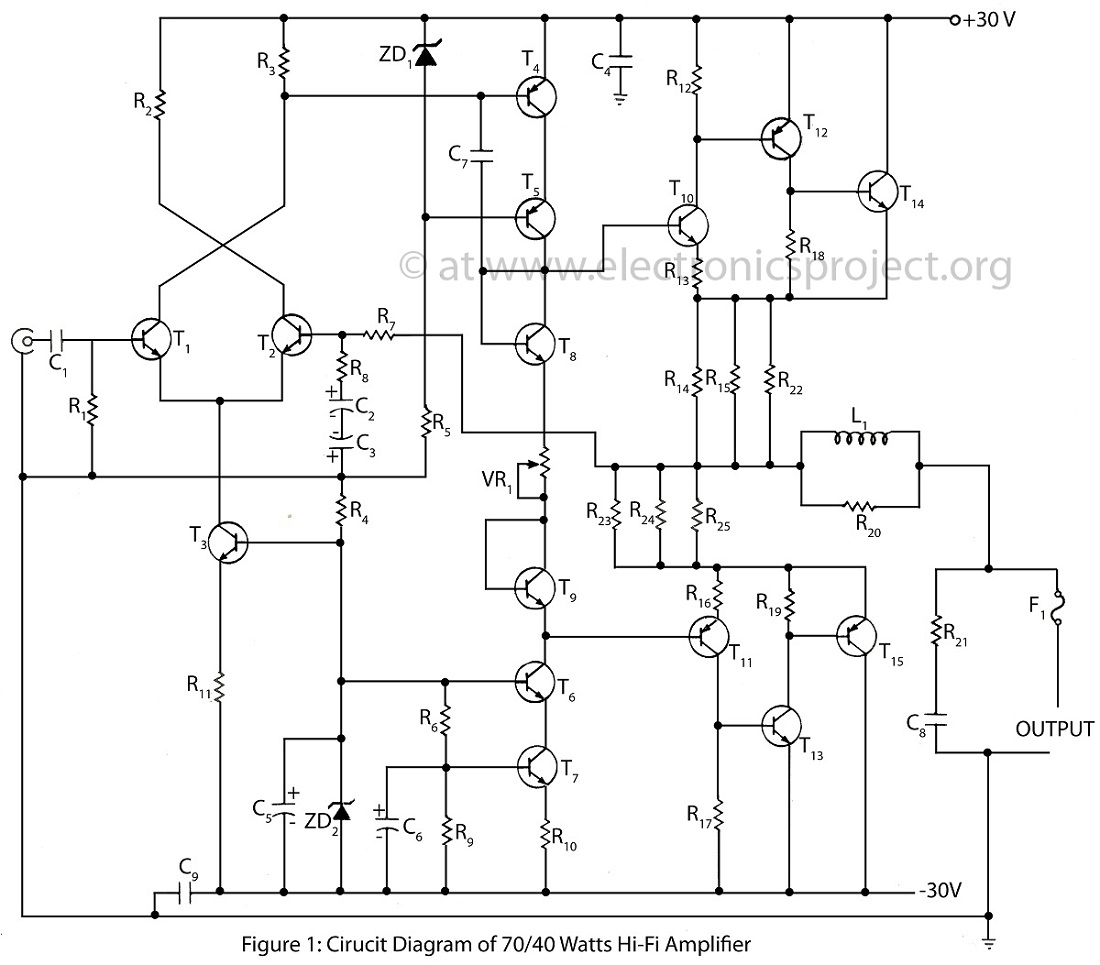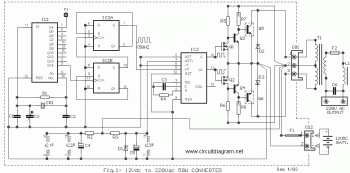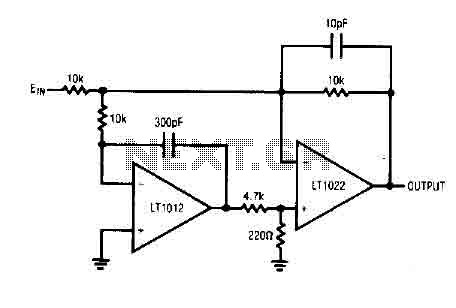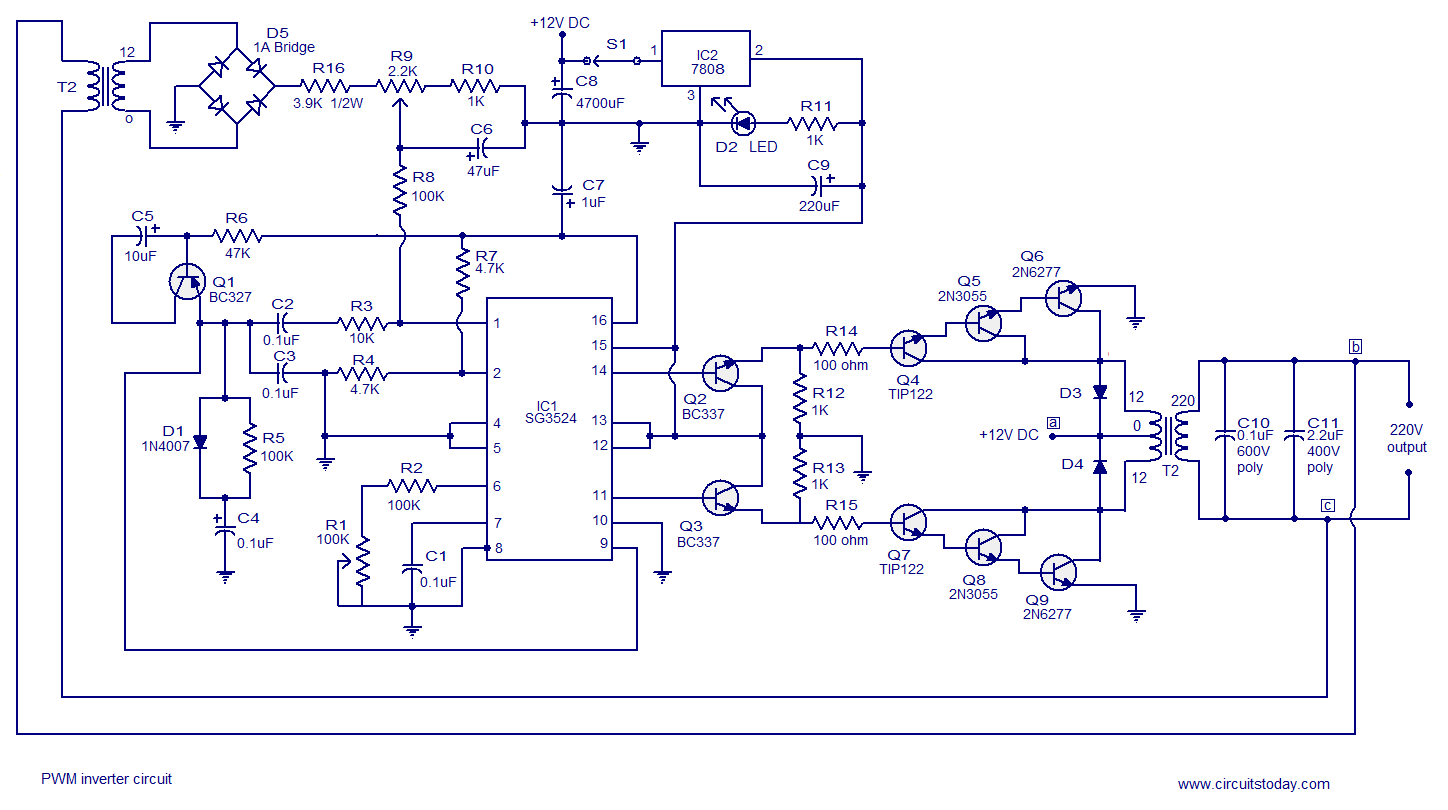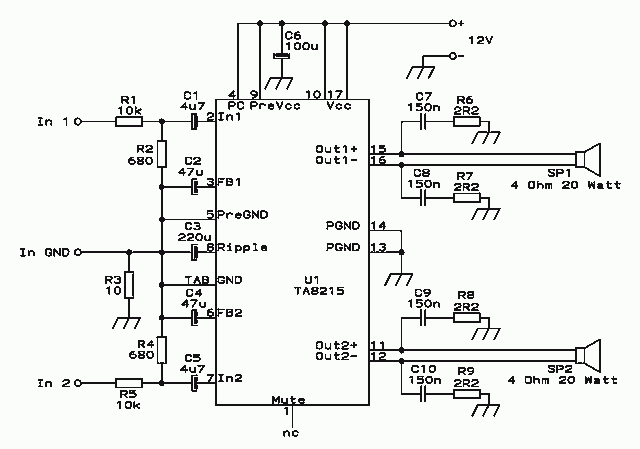
500 watt inverter 12vdc to 220vac
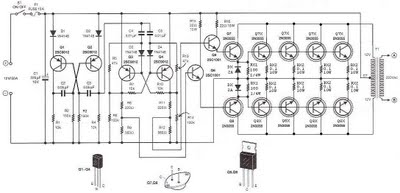
The step-up section of this inverter circuit utilizes a transformer with a 12V center-tapped (CT) secondary and a primary winding designed for 0 to 220V. The operating frequency is established by a flip-flop configured to 50 Hz.
The inverter circuit described involves a transformer that plays a crucial role in converting low voltage DC to high voltage AC. The transformer is specified with a center-tapped secondary rated at 12V, allowing for flexibility in output configurations. The primary winding is designed to handle voltages up to 220V, making it suitable for various applications that require high voltage output.
The flip-flop, which is a key component in this circuit, is responsible for generating the necessary square wave signal at a frequency of 50 Hz. This frequency is standard for many AC applications, especially in regions where the electrical grid operates at 50 Hz. The flip-flop can be implemented using various logic ICs or discrete components, depending on the design requirements and available resources.
In operation, the circuit begins with a DC voltage input, which is fed into the inverter. The flip-flop generates a square wave that drives the primary winding of the transformer. As the current flows through the primary, it induces a magnetic field in the transformer core, which in turn induces a higher voltage in the secondary winding due to the principles of electromagnetic induction. The center-tap configuration allows for either a 12V output or a split output that can be utilized in different applications.
This inverter circuit is commonly used in applications requiring isolated power supplies, such as in off-grid solar systems, uninterruptible power supplies (UPS), and various electronic devices that require a stable AC output from a DC source. Proper design considerations must be taken into account, including the selection of appropriate components to handle the expected load, thermal management, and safety measures to ensure reliable operation.Step up part of this inverter circuit using a transformer 12VCT/500VA in secondary and primary 0 - 220V. While the frequency is determined by the flip-flop which is set to 50 Hz. 🔗 External reference
The inverter circuit described involves a transformer that plays a crucial role in converting low voltage DC to high voltage AC. The transformer is specified with a center-tapped secondary rated at 12V, allowing for flexibility in output configurations. The primary winding is designed to handle voltages up to 220V, making it suitable for various applications that require high voltage output.
The flip-flop, which is a key component in this circuit, is responsible for generating the necessary square wave signal at a frequency of 50 Hz. This frequency is standard for many AC applications, especially in regions where the electrical grid operates at 50 Hz. The flip-flop can be implemented using various logic ICs or discrete components, depending on the design requirements and available resources.
In operation, the circuit begins with a DC voltage input, which is fed into the inverter. The flip-flop generates a square wave that drives the primary winding of the transformer. As the current flows through the primary, it induces a magnetic field in the transformer core, which in turn induces a higher voltage in the secondary winding due to the principles of electromagnetic induction. The center-tap configuration allows for either a 12V output or a split output that can be utilized in different applications.
This inverter circuit is commonly used in applications requiring isolated power supplies, such as in off-grid solar systems, uninterruptible power supplies (UPS), and various electronic devices that require a stable AC output from a DC source. Proper design considerations must be taken into account, including the selection of appropriate components to handle the expected load, thermal management, and safety measures to ensure reliable operation.Step up part of this inverter circuit using a transformer 12VCT/500VA in secondary and primary 0 - 220V. While the frequency is determined by the flip-flop which is set to 50 Hz. 🔗 External reference
